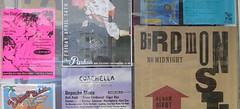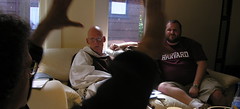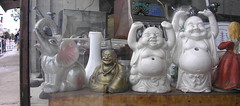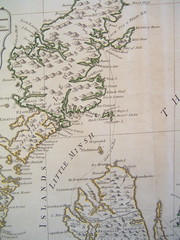Watch this plan

-- "Many big visions for new Big Easy," csmonitor.com
Urban planners believe that they can design a city where design - for walkability, for childcare, for affordable housing, for racial integration -- solve most of the 20th century's most bedeviling problems.
Economic planners think they can solve the city's future by enabling free market economics unencumbered by regulation.
Both parties claim that they're being given a free rein in the future of New Orleans. What we really don't know, what we can't imagine at all, is what the fusion of these two utopias will produce.
Both claim to be able to end poverty, inequality, sickness, and ignorance.
For controversy's sake, we might take the failings of both efforts at their face value.
- Free capitalism will continue to increase the divide between rich and poor.
- New Urbanism will create biking trails for the health and aesthetics of the rich, but will be forced, as always, to relegate the poor to border lands. In the case of New Orleans, this will no longer be the 9th Ward, which will be turned into a park or wetlands to divert flooding. Instead, the poor will be siphoned to some toxic corner of an oil refinery, a good two hours' commute by public transportation from the city and its amenities.
- The American health care system will continue to allow free companies to duck out of paying for the workers' health care. This process of privatization/feudalization will be aided by the regulation-free policies of post-Katrina Louisiana.
- In the face of the coming oil crisis, few families will drive cars out of choice. Streetcars will link the inner circle of elite white suburbs, making the tourist city and consumer city easily accessible to all. Poor black families will be linked by much less frequent connections to the outer city.
- As schools and child labor are deregulated, the new slums of the refinery lands will lack any education whatsoever, and a new class of worker-children will provide labor for the city's basic food, fuel, and consumption needs, in the shops abounding for sweated goods for the tourist markets.
- The New Urbanism will monumentalize the disaster of 2005, creating quaint museums where the now-vanished creole culture and indigeonous peoples of the bayou (now dispersed) are memorialized, thus promoting tourism and increasing revenue for the city.
Oh brave new world, that has such people in it.










0 Comments:
Post a Comment
<< Home